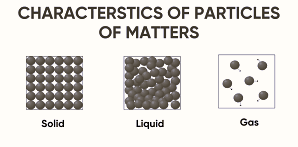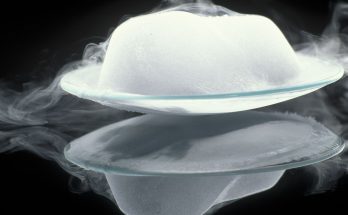Table of Contents
Activity 1.3: Observing Diffusion of Incense Stick Smell in Air
Objective
To demonstrate that particles of matter are always moving and that diffusion occurs in gases. This activity uses the smell of an incense stick to explain how particles spread in the air.
Materials Needed
- An incense stick.
- A matchstick or lighter.
Steps to Perform the Activity
- Place an unlit incense stick in a corner of the room or classroom.
- Move around the room and note how close you need to be to detect its smell.
- Now light the incense stick and observe its smell spreading through the room.
- Sit at a distance and record how long it takes for the smell to reach you.
Observations
- When the incense stick is unlit, its smell is weak and only noticeable when you are close to it.
- After lighting the incense stick, the smell spreads across the room, even to people sitting far away.
Also Check – Chapter 1 -MATTER IN OUR SURROUNDINGS -Class 9 – Simplified Notes
Concepts Behind the Activity
- What is Diffusion?
Diffusion is the process where particles move from a region of higher concentration to a region of lower concentration.
Example: The particles of the incense’s fragrance spread into the surrounding air until they are evenly distributed. - Why Does the Smell Spread Faster When Lit?
- Heat Energy Increases Movement: When the incense stick is lit, heat energy is produced. This increases the motion of fragrance particles, making them spread faster.
- Gaseous Nature: In the gaseous state, particles have a lot of space between them and move freely. This allows the smell to reach far distances quickly.
- Role of Kinetic Energy:
- Particles in the air are always in motion due to their kinetic energy.
- When fragrance particles are released, they collide with air particles and spread in all directions.
Learning Outcomes
- Particles in Gases are Always Moving:
The movement of the incense’s smell shows that gas particles are in constant motion. - Diffusion in Gases is Rapid:
Gaseous particles move quickly because they have the most kinetic energy and large spaces between them, allowing the smell to spread throughout the room. - Effect of Heat on Diffusion:
Heat increases the kinetic energy of particles, which speeds up diffusion. This is why the incense’s smell spreads faster when lit.
Applications of Diffusion in Gases
- The spreading of cooking aromas in a kitchen.
- Smelling perfume from a distance.
- The distribution of oxygen and carbon dioxide in the atmosphere.
Intext and additional Question Answers on Activity 1.3: Observing Diffusion of Incense Stick Smell in Air
Question 1: How close do you have to go near an unlit incense stick to get its smell?
You must go very close to detect the smell of an unlit incense stick because the particles are not moving actively. Diffusion occurs slowly in this case.
Question 2: What happens when the incense stick is lit?
When the incense stick is lit, the heat causes the particles to gain kinetic energy, allowing them to move faster. This rapid movement spreads the fragrance throughout the room.
Question 3: Do you get the smell sitting at a distance?
Yes, once the incense stick is lit, the particles diffuse rapidly, spreading the smell even to distant parts of the room.
Additional Question: Why does heat increase the rate of diffusion?
Heat provides energy to the particles, increasing their kinetic energy. With higher energy, particles move more quickly, colliding with air molecules and spreading faster. This is why diffusion is faster in warm conditions.
Conclusion
This activity shows that particles in gases are always moving and can diffuse rapidly. The spreading of the incense stick’s smell throughout the room demonstrates how diffusion works in the gaseous state. It highlights the role of particle motion and the effect of heat in increasing diffusion rates.

